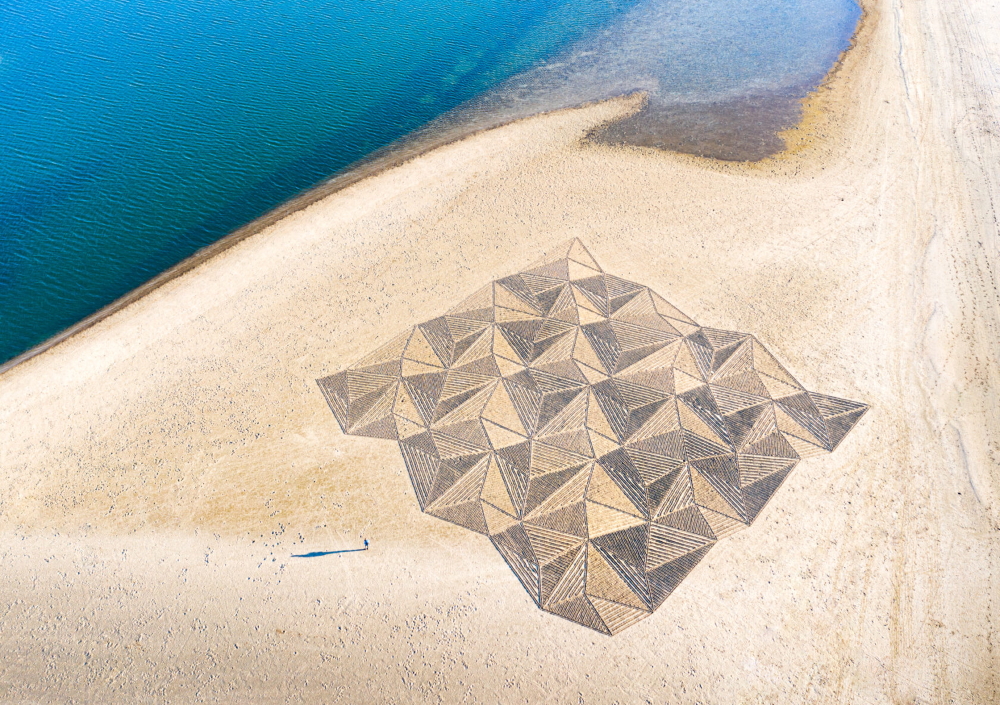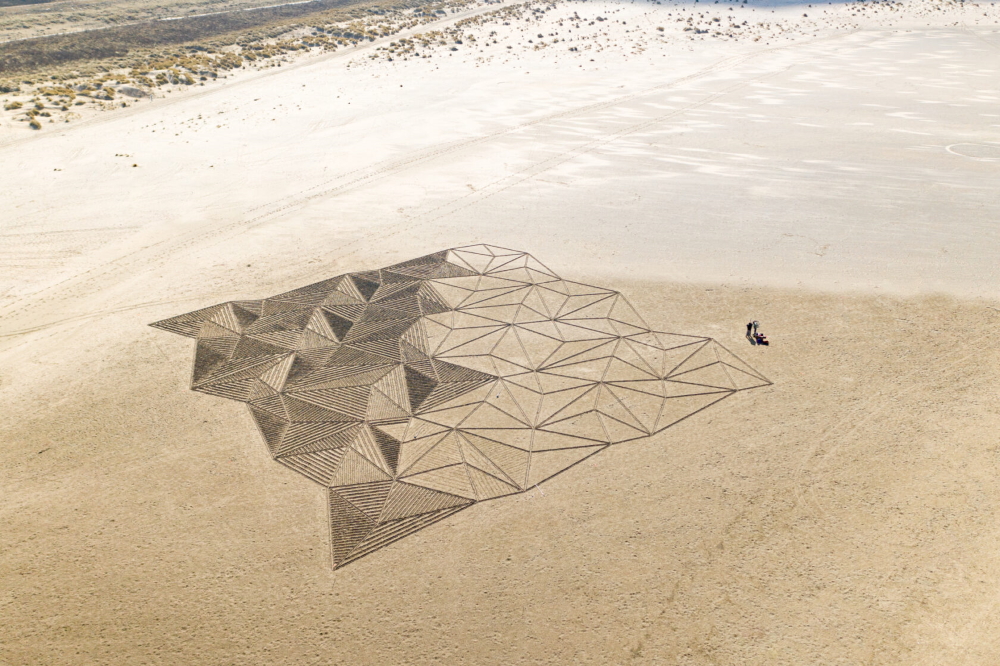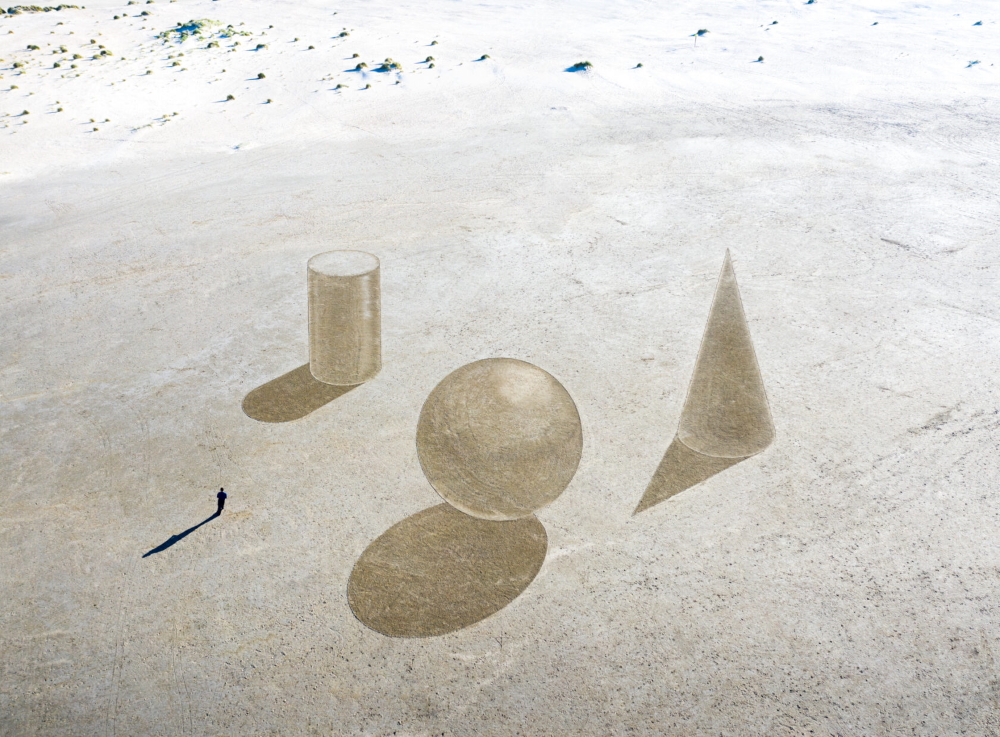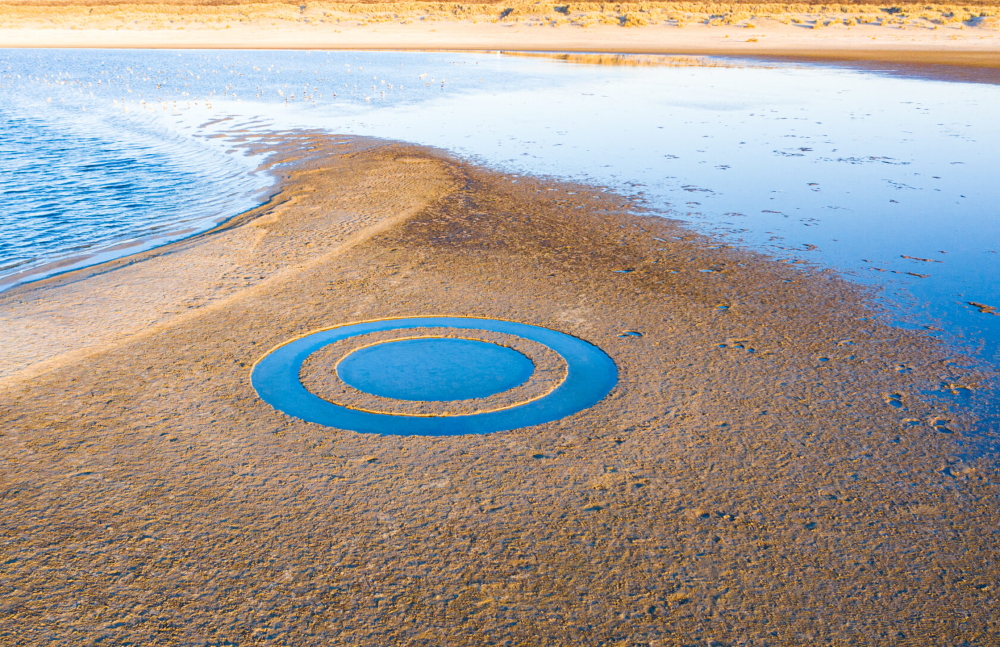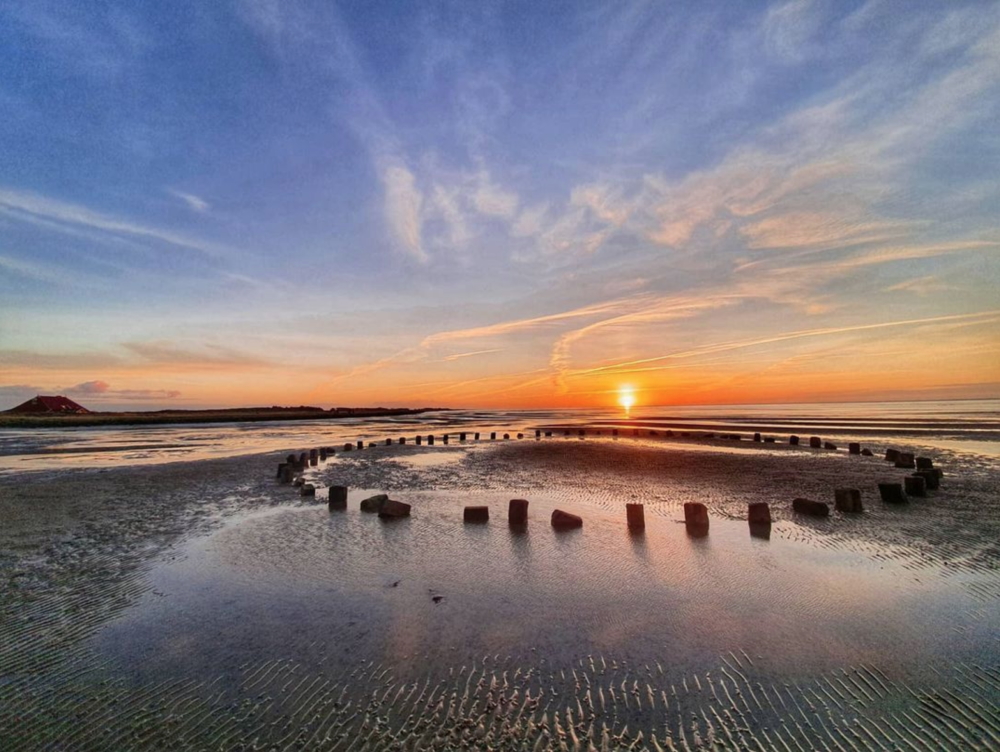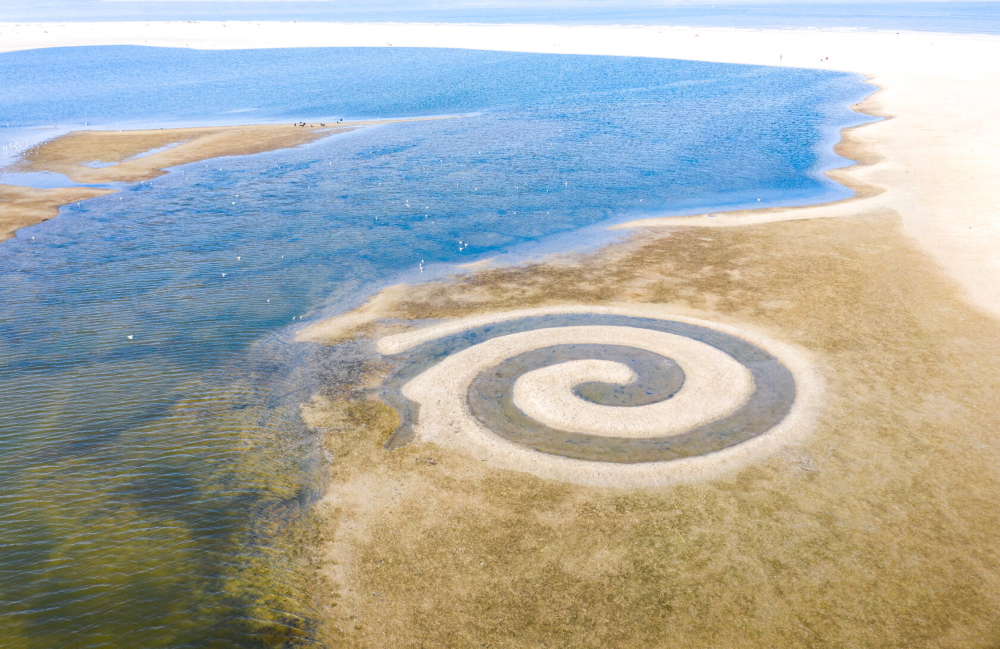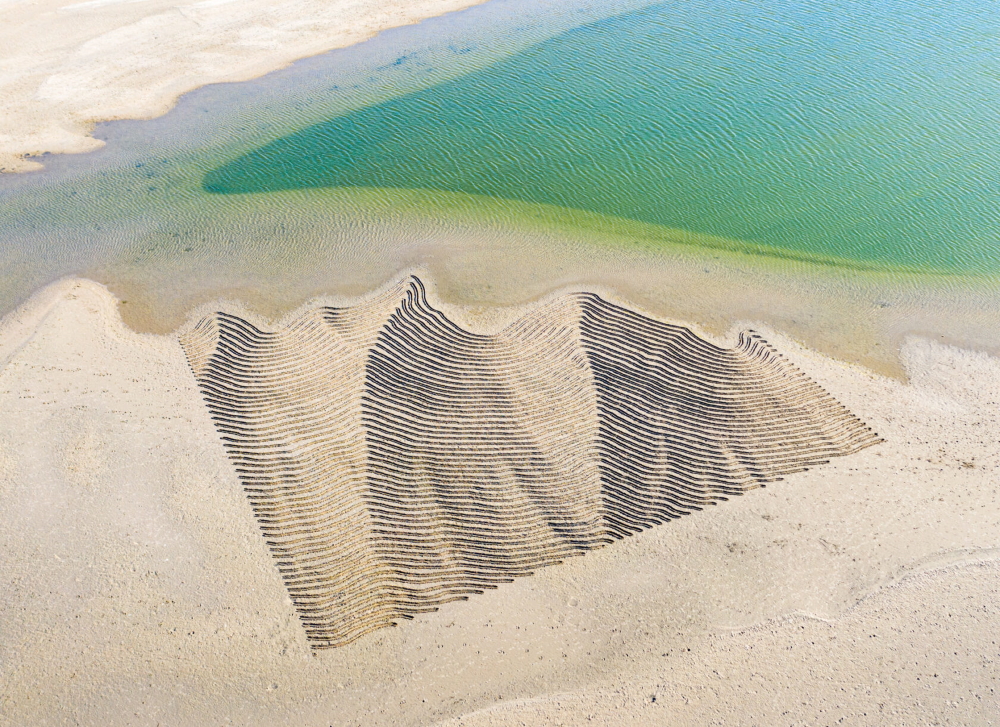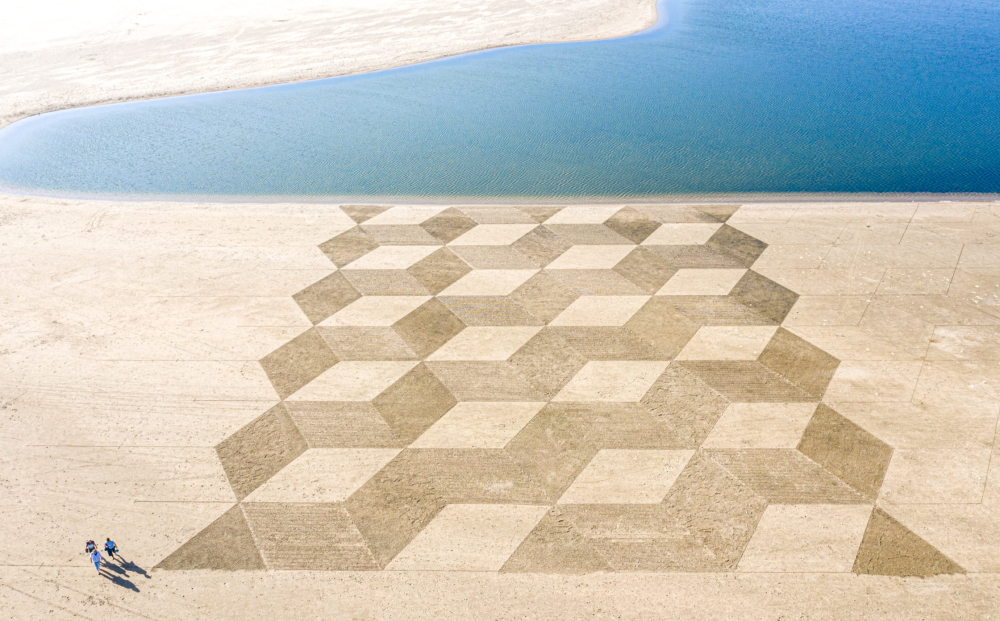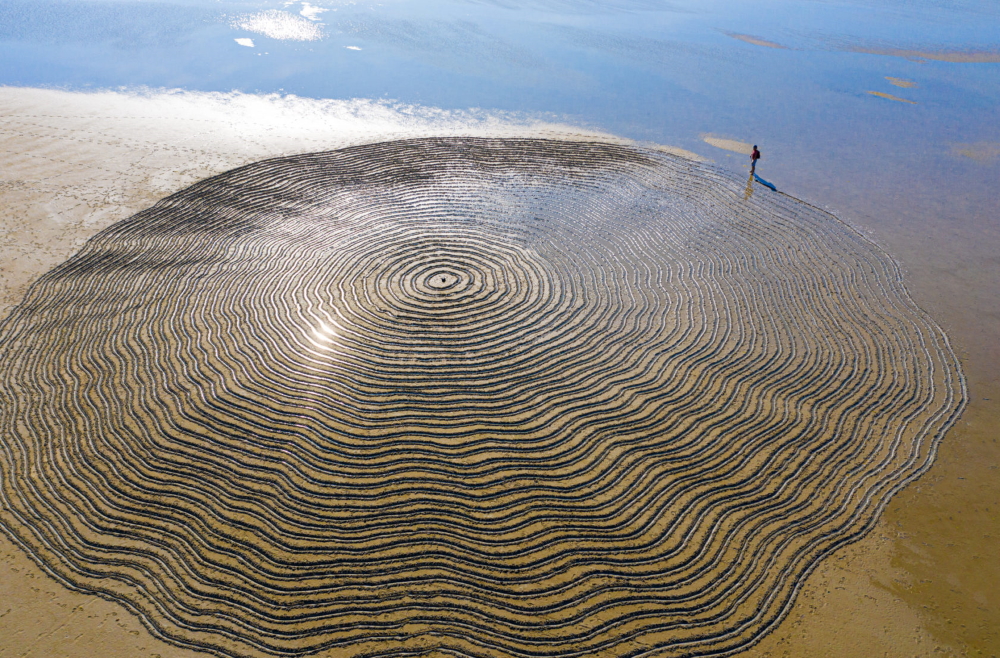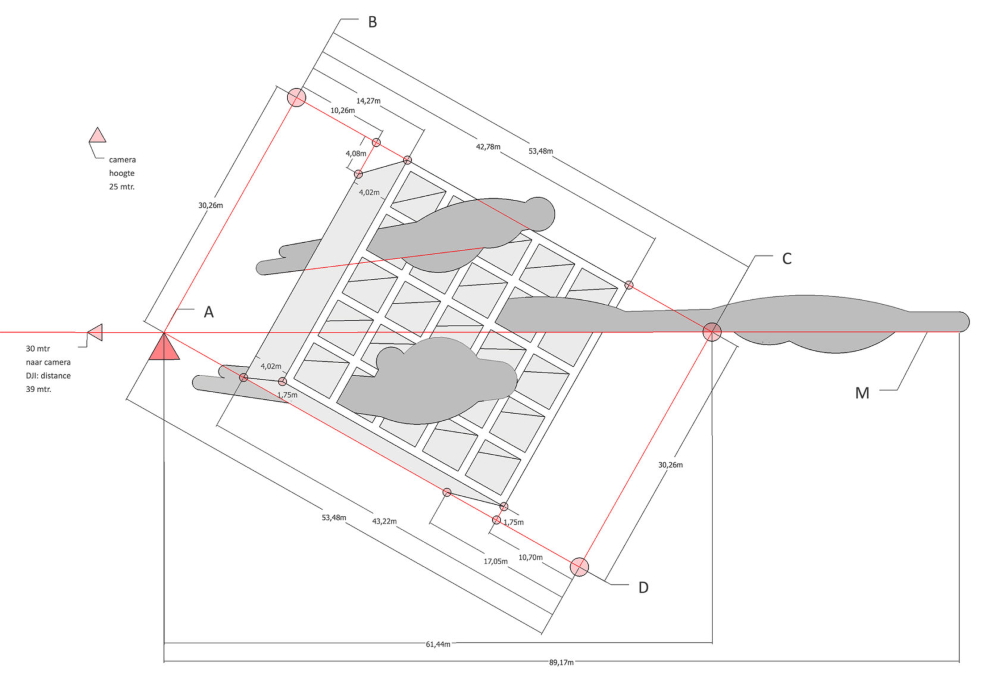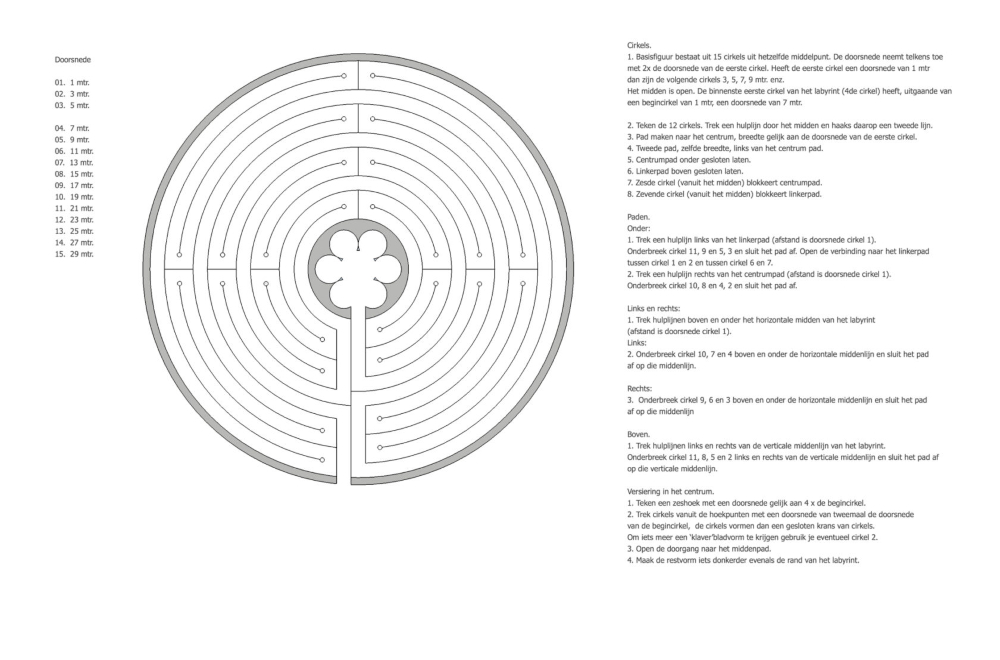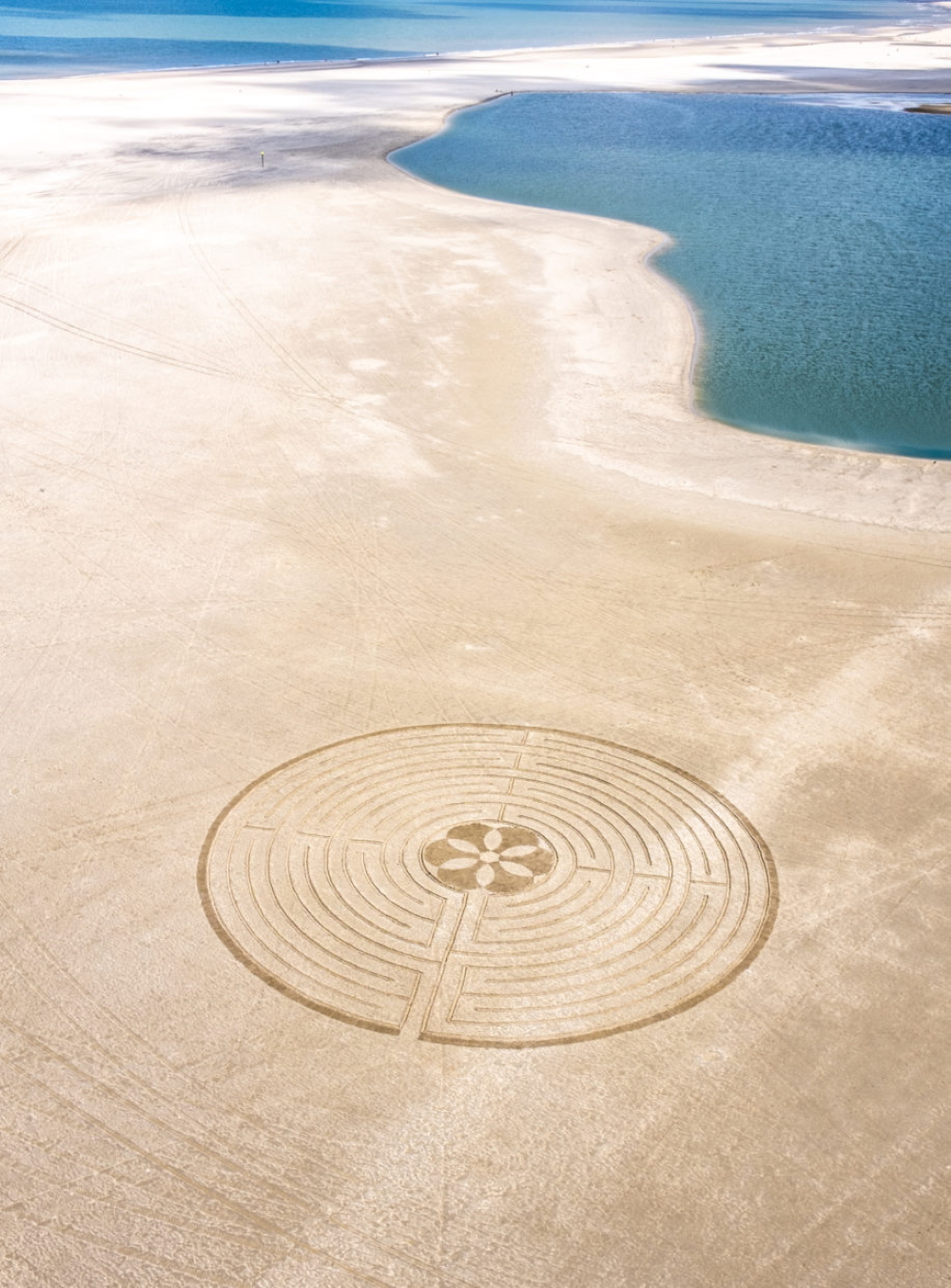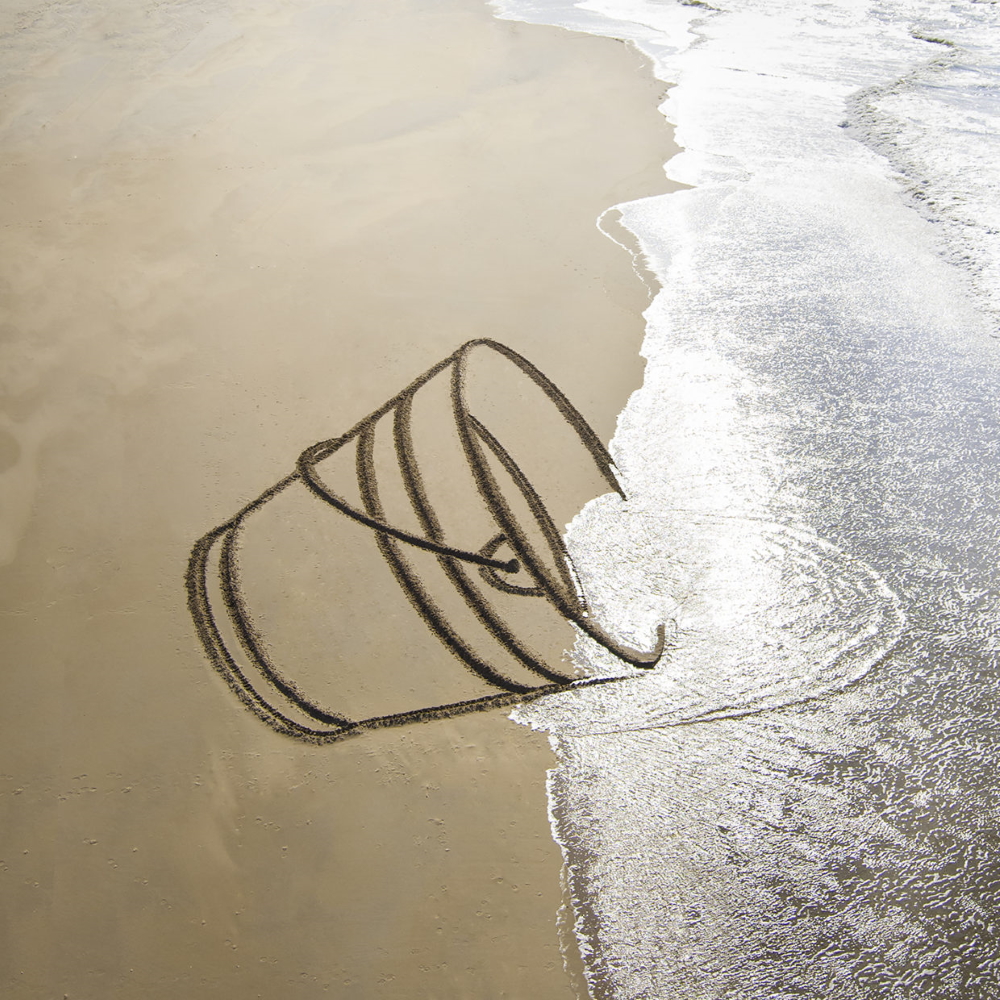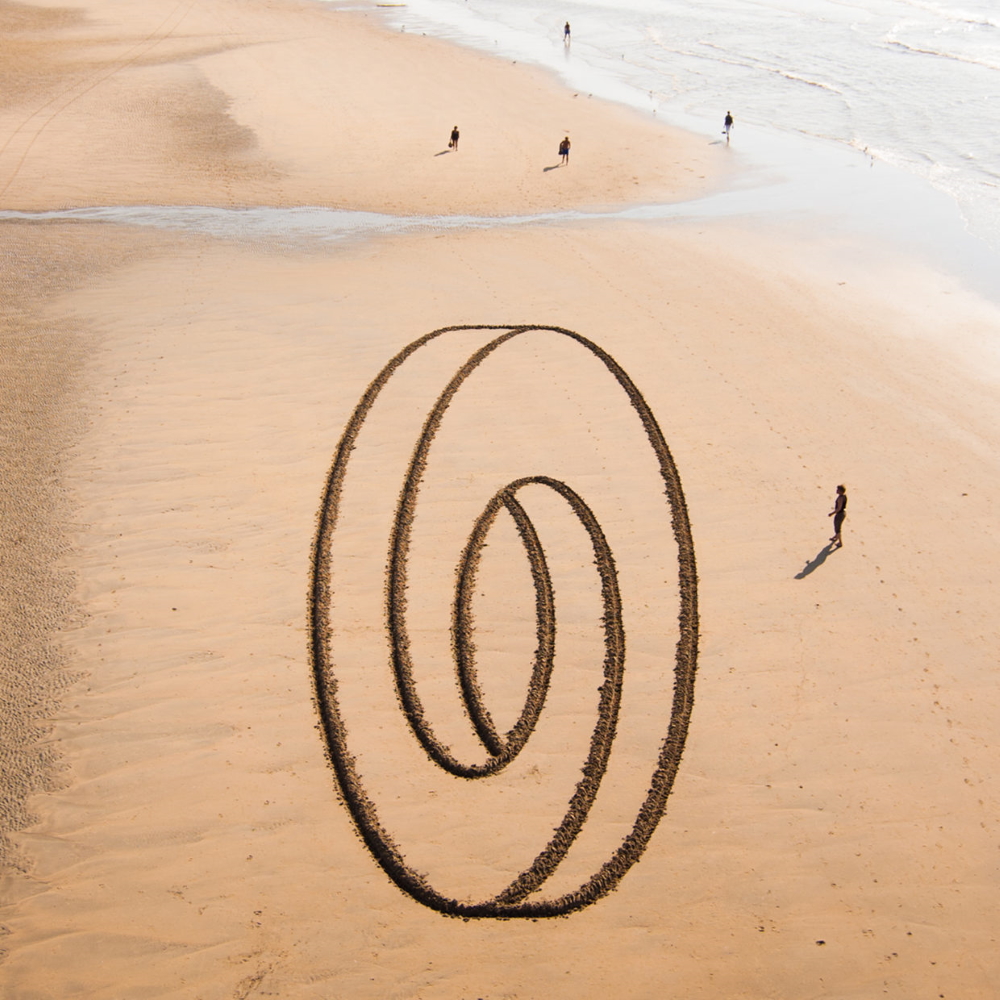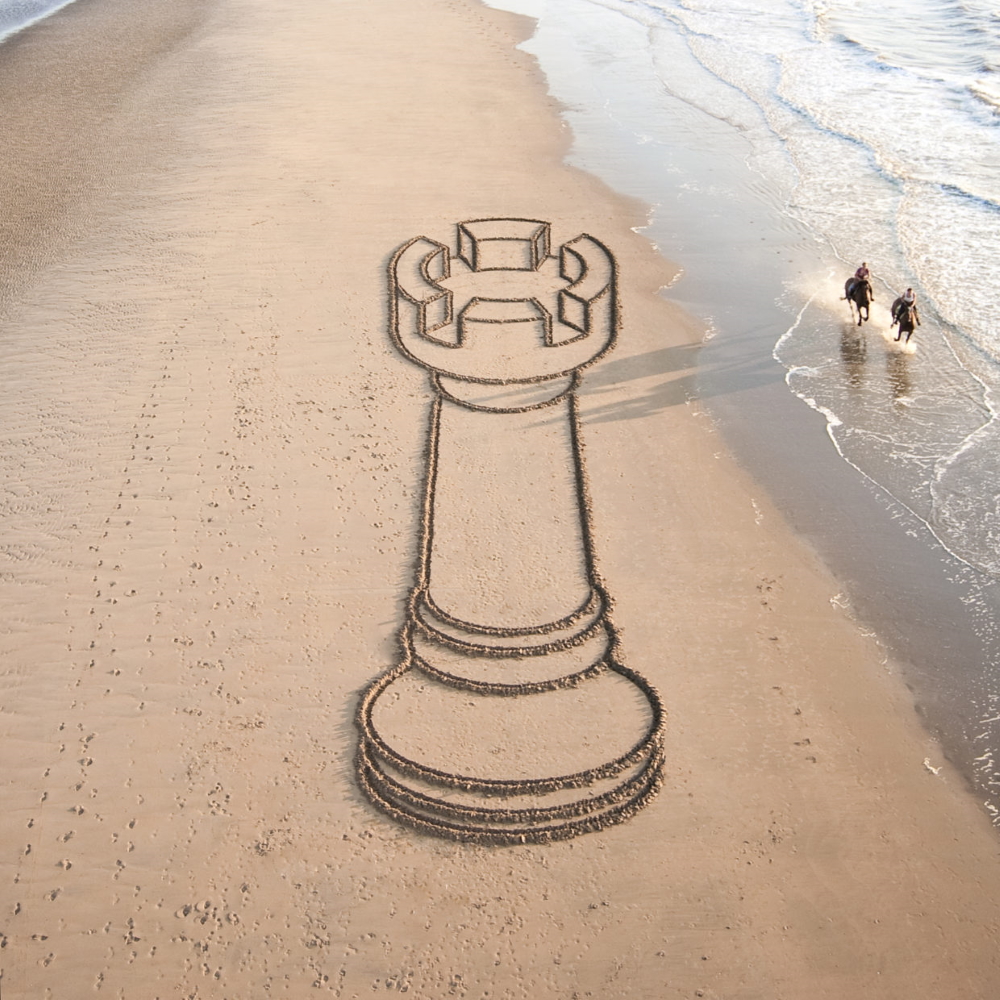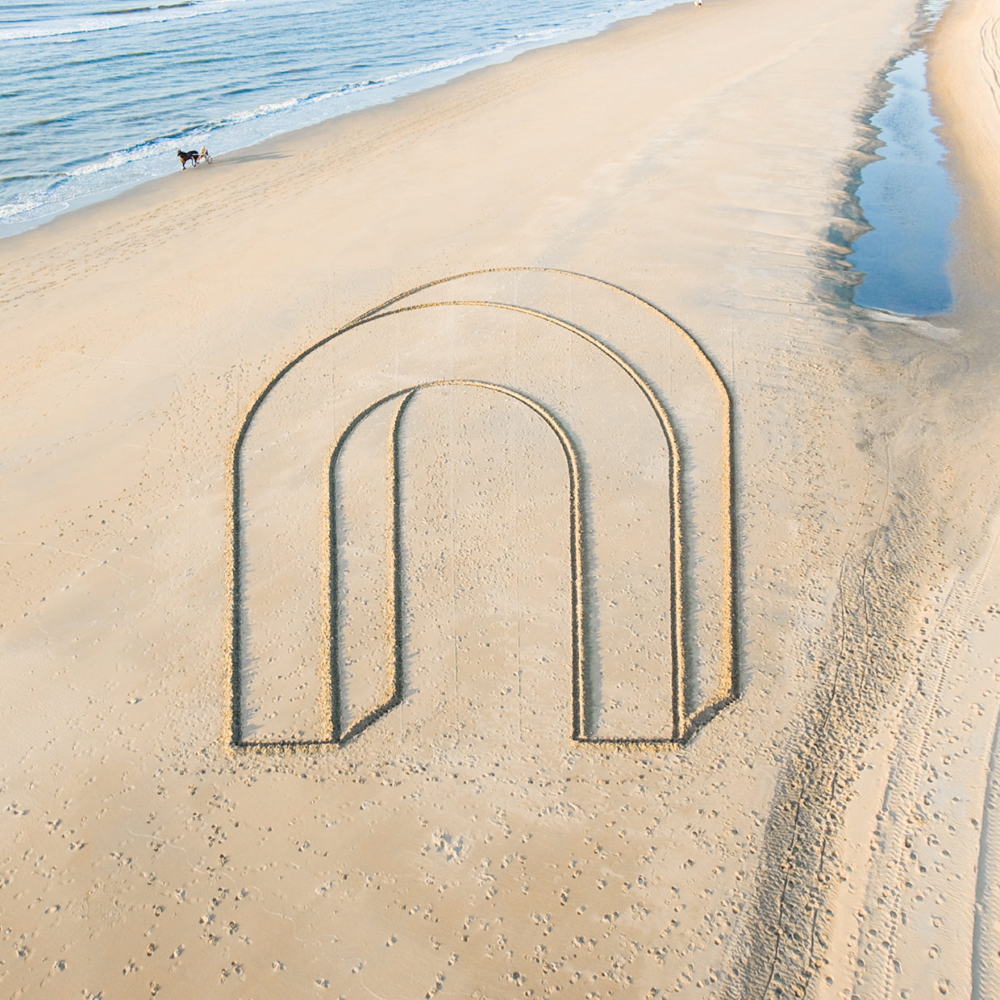Nico Laan
land artist
The Netherlands
Vast graphic patterns in the sand – astonishing at first sight, but on the second they reveal themselves as a clever play with perception and perspective. These enormous sand paintings that pop up all along the coast of The Netherlands are optical illusions, because they are true and false at the same time. The master of this special version of land art - „art made directly in the landscape, sculpting the land itself into earthworks or making structures in the landscape using natural materials such as rocks or twigs (tate.org.uk)“ - is Nico(las) Laan.
Nico Laan
land artist
The Netherlands

Coincidences often play a decisive role in life. This also applies in this case. Being an art school teacher in The Hague/Netherlands Nico Laan took his students to the beach for making drawings in the sand. For capturing their work from a bird’s eye perspective he used a kite overhead with a camera attached to. One of the students drew a three dimensional cube. That got the educator to thinking about perspective „and wondering whether he could make works in the sand that would only appear complete when viewed from a specific angle“ (wepresent.wetransfer.com). This phenomenon is called anomorphosis, „a distorted projection requiring the viewer to occupy a specific vantage point, use special devices, or both to view a recognizable image“ (Wikipedia).
Since then Nico Laan has been returning to the beaches regularly and was inspired to undertake his biggest and most well-known project to date in 2001. Prior to using nature as a canvas for his unique on-site-drawings detailed planning and preparation is required. „He creates a simulation of the planned work on the computer in order to ease the execution process. Every line and space between each shape is calculated beforehand to remove any scope of discrepancy between what lies on the surface of the sand what drone, floating in the air, captures“ (stirworld.com). „Once at the beach, he uses ropes and measuring eqipment to realize his design on a much larger scale“ (dutchreview.com). The independent photographer and (kites) designer stresses: „It is important for me not to add any material but just use the one on the spot. In fact, I only move sand. My aim is to create an image that is in balance with the environment but at the same time takes the necessary distance from it.“ Speaking of distance: Nico Laan‘s artworks, whose realization takes between four hours and three days to complete, vary between 784 m² and 140 meters in diameter. So archiving them is possible only through photography by a drone. Prints of it are for sale later on.
The more experienced the native Dutch (* 1956) was, who has studied Textile/Monumental at the Royal Academy of Art in The Hague and worked as a lecturer there and at the Haagse Hogeschool, the more experimental he became. By ranking sand in different directions he learned to create different tones and colors. On his homepage the following quote is to be read: „In 'temporary drawings' you can make a distinction between anamorphoses and 'normal' drawings. The older work mainly concerns anamorphoses. Later, I started to focus more on 'ordinary' drawings, the effect of light and shadow, the influence of water and the effect of change over time. There the challenge lies especially in finding the ideal camera position.“
Overall Nico Laan’s creations (now being realized with stones in Iceland’s lava fields or altering crops in rapeseed fields too) show that one can turn any everyday place into a work of art. So land art is the visible proof for the correctness of lines in the long narrative poem ‚The Divine Comedy‘. There the 14th century Italian poet Dante Alighieri wrote: „Art, as far as it is able, follows nature; as a pupil imitates his master, thus your art must be, as it were, God’s grandchild!“
Nico Laan lives in The Hague (The Netherlands).
Interview July 2022
Built on sandy ground: ephemeral drawings with that special twist
INTUITION/IMAGINATION
How does intuition present itself to you – in form of a suspicious impression, a spontaneous visualisation or whatever - maybe in dreams?
For me intuition (knowing without thinking) always has to do with visualisation. Often it involves a connection between a concrete image and something I have in mind.
Will any ideas be written down immediately and archived?
No, I just use a small sketchbook where I make notes and small simple sketches.
Are great ideas based on intuition and do they reveal themselves in a kind of clear as well complete version that just has to be realized? Or is it endless trials and errors (after the first spark) that result in constant developments up until the final result?
Both, good ideas usually arise in a more or less complete version, I can picture it exactly. The practical implementation is sometimes straightforward and sometimes a matter of trial and error.
What if there is a deadline, but no intuition? Does the first fuel the latter maybe?
I am hardly bound by strict deadlines.
INSPIRATION
What inspires you and how do you stimulate this special form of imaginativeness?
Inspiration is not something you should passively wait for. Inspiration is something you get by taking action, by experimenting, by making something.
How do you separate the good from the bad and which ideas are worthwhile to be explored further or whether one idea has the potential of being outstanding really?
It's not so much a matter of good and bad ideas, often the challenge lies in optimizing an idea. You often know immediately when that optimum is reached (intuition).
Has it to appeal to you primarily or is its commercial potential an essential factor?
Commercial potential is not a factor for me.
Do you revisit old ideas or check what colleagues/competitors are up to at times?
Yes, I do sometimes build on previous ideas but always to explore them further or to improve them.
CREATIVITY
Which time/place/environment suits your creative work process the best (tranquillity or pressure) and which path do you take from theory/idea to creation?
I work in and with landscapes. It is important to my working method to observe the chosen landscape from the intended point of view. If the idea fits within this pre-research I will further develop the plans to a practical level.
What is better in the realization process: speed and force creativity i.e. grasp the magic of the moment, or a slow, ripening process for implementation/elaboration?
For me the second works better.
If problems occur during creativity or one’s stuck even, how can these be solved?
There are always setbacks or unforeseen developments. It's just part of the process and you have to learn to deal with it.
How important are self-doubt and criticism (by others) during such a process i.e. is it better to be creative on your own, only trust your own instincts, or in a team?
I usually work alone in developing the plans, but it is very important to discuss it with others as much as possible. In the end, I follow my own path.
Should a creative always remain true to him-/herself including taking risks & going against the flow or must one, for reasons of (commercial) survival, make concessions to the demands of the market, the wishes of clients and the audience’s expectations?
It is very important to realize ideas as purely as possible and not get too distracted. In the end, that is the most satisfying.
How is innovation still possible if one has established a distinctive style and, just in case, is it good to be ahead of one’s time even one hazards not being understood?
In my experience, the number of possibilities is actually expanding.
When does the time come to end the creative process, to be content and set the final result free - or is it work-in-progress with an endless possibility of improvement?
For me, it is ‘work in progress’ with an endless number of possibilities. That said, there are enough moments worth capturing.
In case of failure or - worse - a creativity crisis how do you get out of such a hole?
Don't panic, it's part of the game.
SUCCESS
Should/can one resist the temptation to recycle a ‘formula’ one’s successful with?
‘Recycling’ is not satisfying. It is the discovery of new possibilities that makes it so interesting.
Is it desirable to create the ultimate/timeless work, but doesn’t “top of the ladder” bring up the question of “what’s next?” i.e. isn’t such a personal peak “the end”?
I don't think there is such a thing as the ultimate work. It's a landscape with peaks and valleys that ensure it remains challenging.
MY FAVORITE WORK:
This is still one of my favourites. It's simple, and intriguing. The underwater part barely hidden behind a reflective veil.

